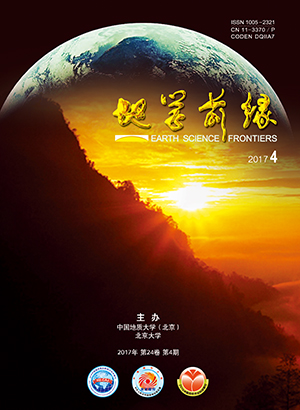|
|
Origin and controversy of the term “软玉(RuanYusoft jade)” and a proposal to remove the word “软(Ruansoft)” from “RuanYu”
SHI Guanghai,ZHANG Xiaochong,XU Lin,LI Xinling
2019, 26(3):
163-170.
DOI: 10.13745/j.esf.sf.2019.5.25
The term “RuanYu”(written as软(軟)玉 in Chinese) has a literary meaning of “soft jade”, which is equivalent to nephrite in some literature. The term has become highly controversial recently. Arguments against it came from Chinese archaeologists and gemologists. Archaeologists argue that “RuanYu” has never been used in China at least until the end of the Qing Dynasty; in addition, the gemstone is not soft at all. Gemologists further point out that the hardness of Chinese jade material, mainly composed of tremolite-actinolite, exceeds those of glass and iron, with no wearing scratch on its surface after long term use. Then why Chinese jade is called “RuanYu”? Since jade has been traditionally loved and well respected in China, and jade culture is an important component of the Chinese culture, we believe that it is of great significance that we should clarify this controversy by finding the origin of this term. In this study, we summarized the history of the term “RuanYu” by extensive researching of relevant references around the world. Our study shows that the word “Yu(玉)” has been used to describe the jade material in China since ancient times. The term “RuanYu”, on the other hand, first appeared in the book titled “The Mineral Names: English, German and Japanese”, published in 1890 in Japan, by Koto where he translated the English word “Nephrite” to “軟玉(Yuan Yu)” for the first time. Previously since 1846, however, “nephrite”(appeared roughly in the 16th century or later in the West) had been used to describe the main mineral of ancient jade from China. In 1921, The term “RuanYu” was first introduced to China by Chinese scholars studying in Japan, and later appeared in many mineral-related books in Chinese. In 1996, the term was listed as a Chinese gemstone name in the Gems-Testing National Standard, and continues its use till now. From this summarized history, one can see that in 1890, when China was suffering from war, poverty and backwardness, and looted jade artifacts were brought out of China in large quantity, a modifier “軟(Ruansoft)” was added to 玉(Yuthe traditional Chinese name for jade) by a Japanese author to ascribe to “nephrite”. We consider the adaptation of the term “RuanYu”, which is not of Chinese origin and was not used traditionally by Chinese people, inappropriate. We recommend that the traditional Chinese name “玉(Yu)” be used for tremolite jade to avoid problems the term “RuanYu” may imply. Although the jade used in the early period of China had various types, however, tremolite jade has been dominant since the Western Zhou Dynasty. By restoring the name “Yu” to describe Chinese jade, we restore the name consistent with Chinese history and cultural tradition.
References |
Related Articles |
Metrics
|

